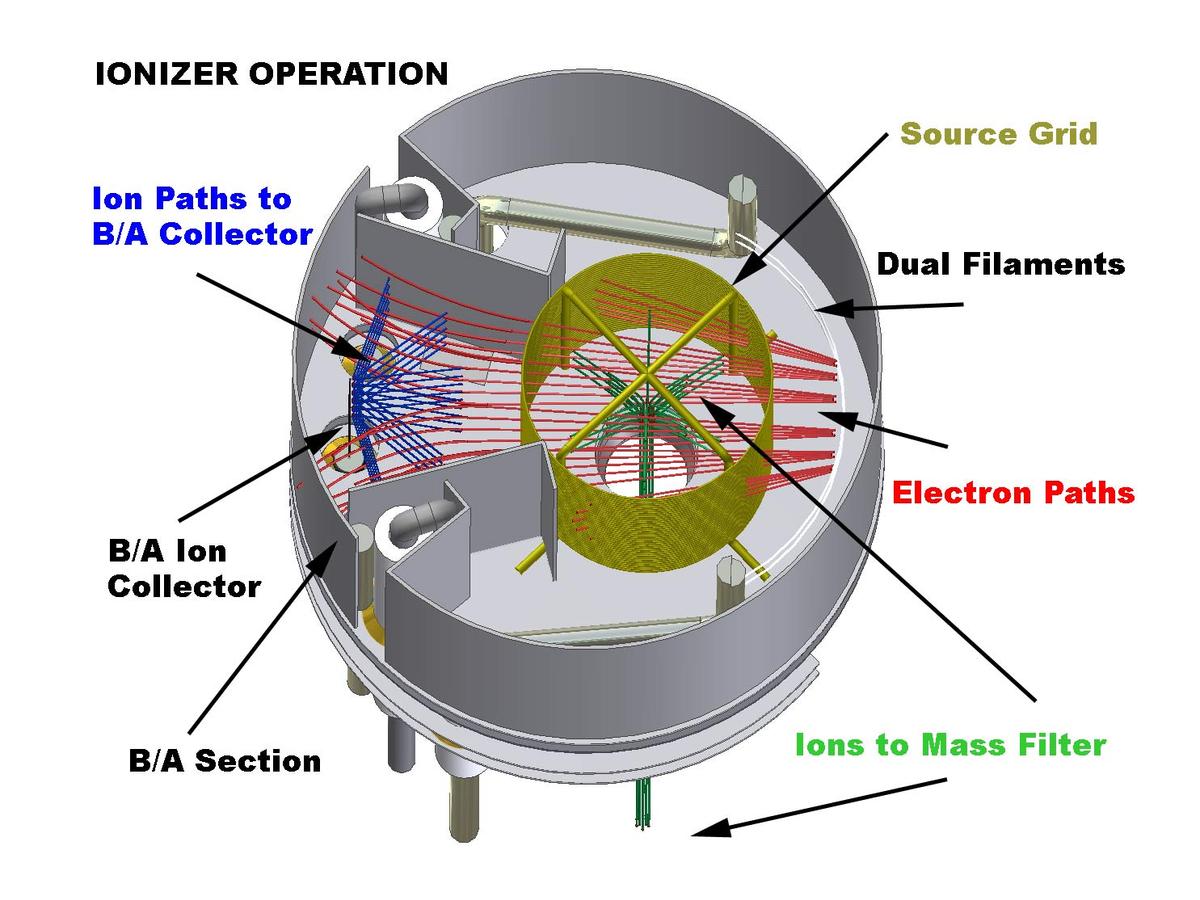Residual Gas Analyzer, Ion Gauge and Pirani Gauge operation
The Extorr residual gas analyzer has a Pirani gauge built in to the base of the vacuum probe. There is a separate amplifier circuit to control it so that the output is always available to the firmware and software. The geometry is such that it will give useful readings up to atmospheric pressures. Sometimes these extended range pirani gauges are referred to as convection gauges. There is also a separate Bayard-Alpert type ion gauge built into the ionizer with its own current amplifier. Why did we go to all that trouble? After all, most other RGA’s will give total pressure readings of some kind.
Advantages of the Pirani gauge
With the Pirani/convection gauge, you can monitor pump down from atmosphere and more importantly you can find gross leaks at pressures above where a typical RGA will operate. The Pirani gauge is a very thin wire operated at 100 degrees C. above the ambient temperature of the probe. The heat loss is monitored by measuring the resistance in a sensitive bridge circuit, and is proportional to the gas pressure. The cooling effect of different gases on the wire can be exploited to find leaks. While observing the output, you can spray helium, for example on the suspected leak, and observe a change in the output of the gauge. A drop of acetone on the leak will often have a large effect on the output, and is commonly used also.
Another advantage of the Pirani/convection gauge is that the filament can be protected from inadvertent operation at high pressures. There are other schemes to protect the filaments, and most will work if the system is suddenly vented, but there is an ambiguity when operating just above 10-3 Torr where electron emission is still obtainable from the filament, but the output of an ion gauge or RGA will give low readings indistinguishable from low pressure readings. A typical scenario is that a pump fails, but the system is not vented and the pressure is maintained only by a backing pump. The filament stays on and eventually oxidizes and burns out. Our no-compromise philosophy lead us to the better solution.
Advantages of the ion gauge
In previous RGA designs, total pressure readings were obtained by looking at a portion of the ions created in an ionizer that was designed to produce ions for the quadrupole analyzer. All of the schemes we know of were compromises in some way or another. Either they had high x-ray limits (were useless below about 10-7 Torr), had bad mass discrimination, (especially the ones that use the same faraday detector, read the disclaimers in most other competitor’s manuals about total pressure readings) and had sensitivities that varied widely depending on the conditions of the instrument settings and the aging of the ionizer. B/A type ion gauges are pretty simple and they work quite well. They have been used for decades and are the most widespread gauges in use today. The main difference between a B/A gauge and an ionizer intended for producing low energy ions for a quadrupole mass filter is in the voltage levels on the elements and the cross section of the ion collector. So we essentially put a B/A type gauge beside an ionizer that was optimized for the quadrupole. This enabled the electrons from the filament to do double duty without compromising either gauge type. As with all other RGA’s the ionizer sensitivity will decrease somewhat with age, but the total pressure readings will be as accurate as a typical B/A type gauge (even with the electron multiplier turned on.) Again, no compromises on performance.
Well, why do I need the total pressure reading anyway?
A typical use of the residual gas analyzer is to keep a record of the background gasses in a system so that if something goes wrong with a process, you can refer to prior scans. As an ionizer ages, its sensitivity will decrease until it needs replacement (very clean UHV systems may not see this effect). If you notice that the partial pressures today are less than they were last month, for example, it might be useful to know whether this is due to normal aging or process variations. The record of the accurate total pressure can often resolve this ambiguity.

